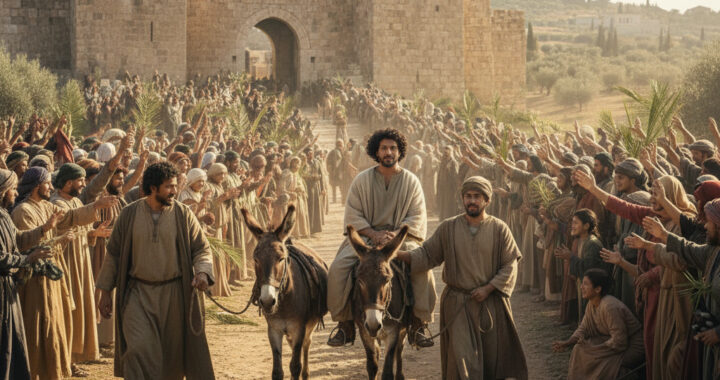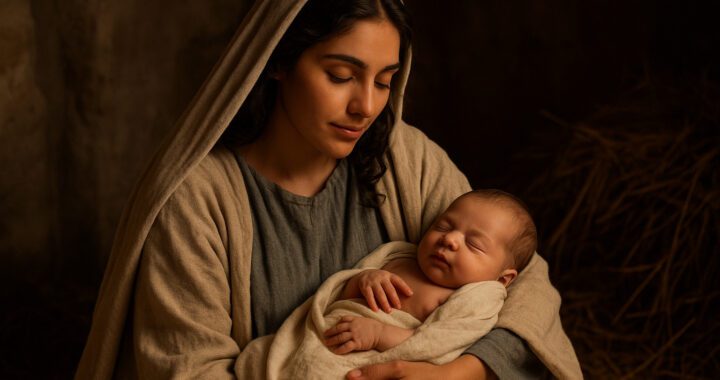Christmas is the most important holiday in our nation. As observed in our country today, Christmas is a strange mixture of Biblical truth, church tradition, folk custom and commercialism. It is one of the busiest seasons for travel. It is important not only to the airlines and bus companies, but also to many other kinds of businesses. Some businesses make Christmas lights, Christmas decorations, Christmas cards, and Christmas gift items all year long. A variety of other businesses depend on Christmas sales for a part of their annual income. In some cases, 25 percent of a company’s sales are related to the Christmas season.
Christmas cards were unknown to the Pilgrims and the Puritans. The first one was handmade in 1843 by an artist named John Horsley. Twenty years later a London company began printing and selling Christmas cards on a large scale. Soon it became a major source of Christmas sales. It is nice to send and receive Christmas cards, but like other Christmas related items, it has its commercial side as well. Sad to say, Christmas is often so commercialized many forget its real meaning.
What, of Christmas, comes from church tradition and folk custom? The name “Christmas”, the Christmas tree, the giving of gifts, and Santa Claus, among other things.
The Bible does not use the term “Christmas” in referring to the event. The name comes from Old English, and was once “Christes Maesse.” It means “Christ’s Mass.” It is a remnant of Latin Church tradition from Medieval England. The earliest record of the celebration of Christmas dates from A.D. 200. Different dates were used in that early period for the celebration of Christ’s birth. By A.D. 336, December 25 was being used in the Western church as the date of Christmas. In the Eastern church, January 6 was used more often, and it is the date still used for Christmas in the Eastern Orthodox Church today.
The Christmas tree seems to have become a part of Christmas around A.D. 700 with the missionary endeavors of Boniface (Winfrid). He was an English missionary serving in Germany. The German Druids worshipped at a sacred oak. Boniface, it is said, cut down their sacred oak, and told them to worship Christ. A fir tree grew where the oak once stood and Boniface told them it was a tree of peace. Much of this is based on tradition, however, and may or may not be so.
The Germans were the first to decorate the Christmas tree. By the time of Martin Luther, they decorated Christmas trees with apples. Martin Luther is credited with using candles to decorate the Christmas tree. This custom found its way to England when Albert, a German prince, married Victoria, an English queen. From England it came to America with the early English settlers.
The action of the wise men when they brought gifts of gold, frankincense, and myrrh to the Christ Child seems to have inspired the giving of gifts. Later Christians gave gifts to each other to share their happiness on the occasion of the birthday of Christ.
How did Santa Claus get mixed with the Christmas celebration? It goes back to Nicholas, a bishop of Myra in Lycia, a province in Asia Minor. Nicholas lived in the A.D. 300’s. He was a kind and generous bishop. He often went out at night taking presents to the needy. After he died, his fame spread over Europe. When the medieval church assigned days on which to worship different saints, December 6 was assigned to Saint Nicholas. He became the patron saint of children. He was believed to have brought gifts to children on the eve of his day.
Children in Germany and Holland were especially fond of Saint Nicholas. German legend added the idea that Saint Nicholas only brought gifts to good boys and girls and that he had fur on his clothing. In Holland, a person representing Saint Nicholas would ride through town on a white horse. When the Dutch came to New Amsterdam, they brought the custom of Saint Nicholas with them. They called him “Sinterklaas.” The English later took New Amsterdam from the Dutch and called it New York. The children of the English settlers borrowed the custom of Sinterklaas, but had trouble pronouncing the Dutch name. Thus, it became Santa Claus.
Saint Nicholas had always been tall and thin, but that, too, changed. The Dutch settlers of New York were much more plump. In 1809, Washington Irving wrote a book about the Dutch in New York and described Saint Nicholas as a plump fellow who rode in a wagon above the tree tops and dropped presents down chimneys.
In 1822, an Episcopal minister, Clement C. Moore, changed Saint Nicholas more into the Santa Claus of today. Moore was a seminary professor who taught Greek and Oriental literature. But for his children he composed a poem called “A Visit from St. Nicholas.” It is perhaps better known as “‘Twas the Night Before Christmas.” He gave Santa Claus a cherry-red nose, substituted a sleigh for the wagon, and reindeer for the horses. He also named the reindeer.
As the 1800s were drawing to a close, Santa Claus got his white beard, thanks to an American cartoonist Thomas Nash who drew for Harper’s Weekly magazine. The final touch came about thirty years ago when a popular song made Rudolph the head of the reindeer team. Needless to say, there is very little left in “Santa Claus” that could remind anyone of the saintly bishop of Myra.
The Protestant Reformation replaced the worship of saints with the worship of Christ. So instead of Saint Nicholas, attention was directed to Christ. In German He was called “Christkindli” (Christ Child). But alas, in time this degenerated into Kris Kringle, a fairy-like creature who is supposed to bring gifts at Christmas time.
To find the real meaning of Christmas, we must turn to Scripture. Some of the details of Christ’s birth are found in Matthew 1–2 and Luke 2. The place was Bethlehem, and His mother was Mary. The exact date of Christ’s birth, however, is not known. What do we know about the birth of Christ from Scripture?
We know it was a virgin birth. This was foretold by the prophet Isaiah. God wanted to give wicked King Ahaz the greatest sign in heaven and earth. God said it would be the virgin birth of Christ (Isa. 7:10–14). Matthew refers to this prophecy in 1:23 and used the word parthenos which can only mean virgin. He also clearly states that Jesus was conceived before Joseph and Mary came together (1:18a) and that she “was found with child of the Holy Ghost” (1:18b). Christ was virgin born (see also Luke 1:35).
We know from Scripture, too, that it was a royal birth. Jesus was born “King of the Jews” (Matt. 2:2). Matthew shows that Jesus was of the house of David, the royal line. He presents Jesus as the prophesied king. Jesus was not simply born to be king. He was already king when He was born. The wise men had it right. Wise men today also recognize Him as the King of Kings, Son of God, and the one and only Savior.

Dr. John Hartog, II
Dr. John Hartog II (D.Th., Grace Theological Seminary and D.Min., Central Baptist Theological Seminary), was a beloved professor, pastor, and scholar who faithfully served the Lord for over 50 years. He earned degrees from Moody Bible Institute, Wheaton College, Grace Theological Seminary, and Central Baptist Seminary. Dr. Hartog was a passionate teacher and pastor, spending much of his life at Faith Baptist Bible College and Theological Seminary, where he taught for 23 years.
Known for his deep love of Scripture and engaging teaching style, he made a lasting impact on students and congregations alike. Dr. Hartog’s legacy is one of unwavering devotion to Christ, a love for God’s Word, and a heart for ministry. He went home to Heaven on August 18, 2024.

